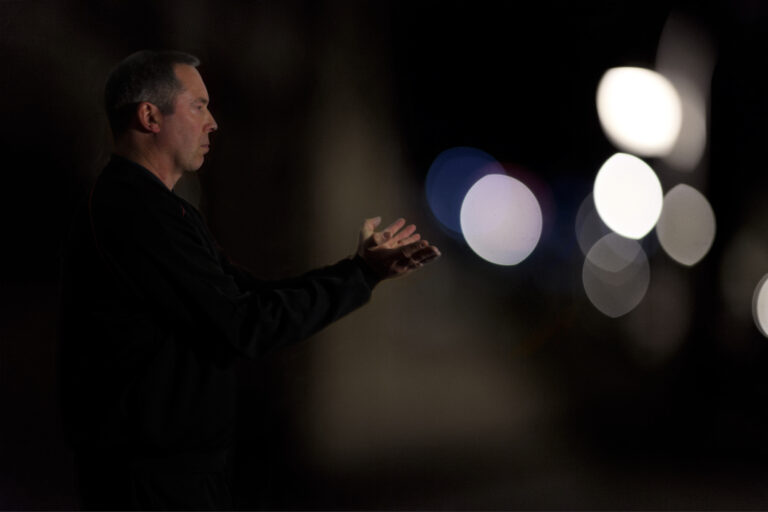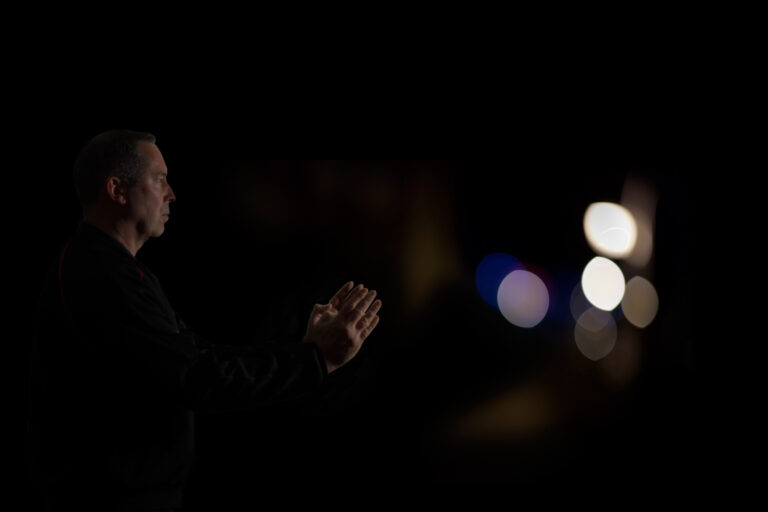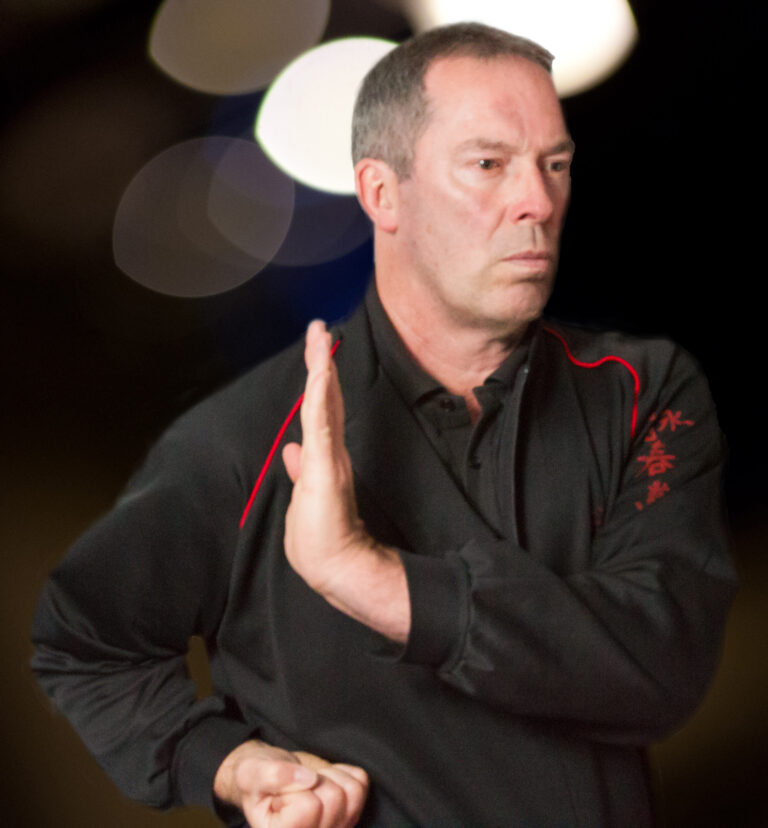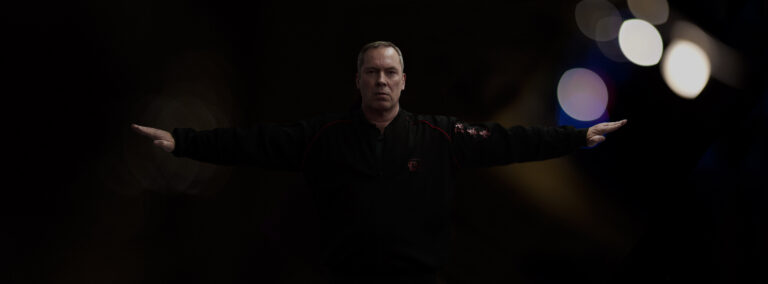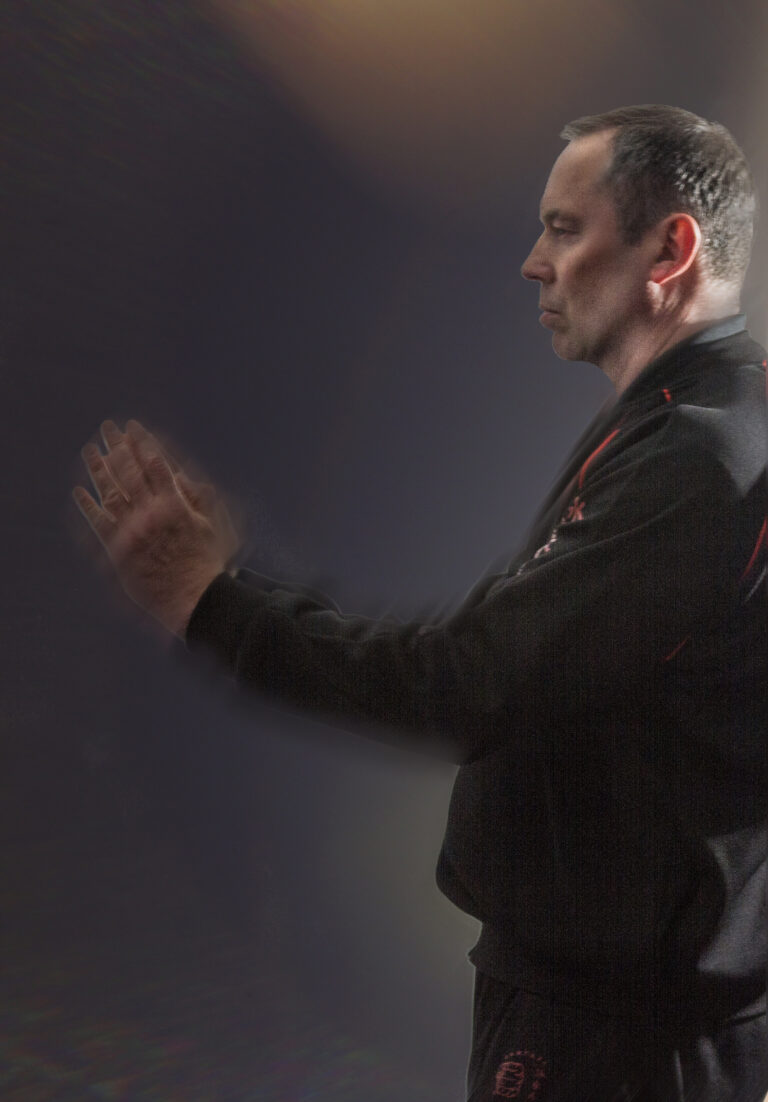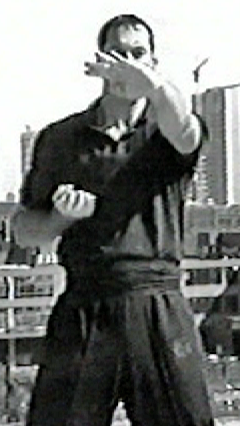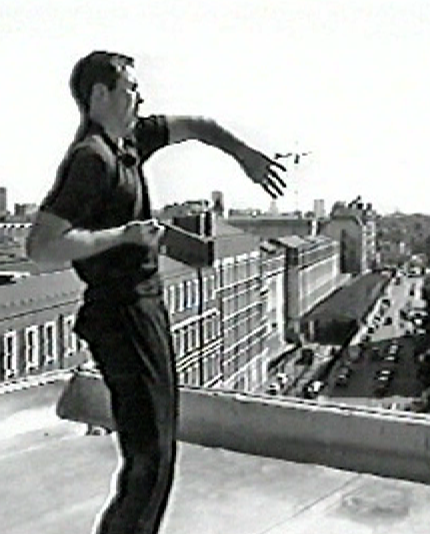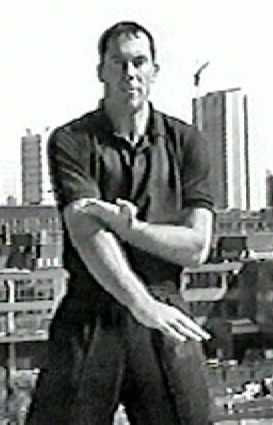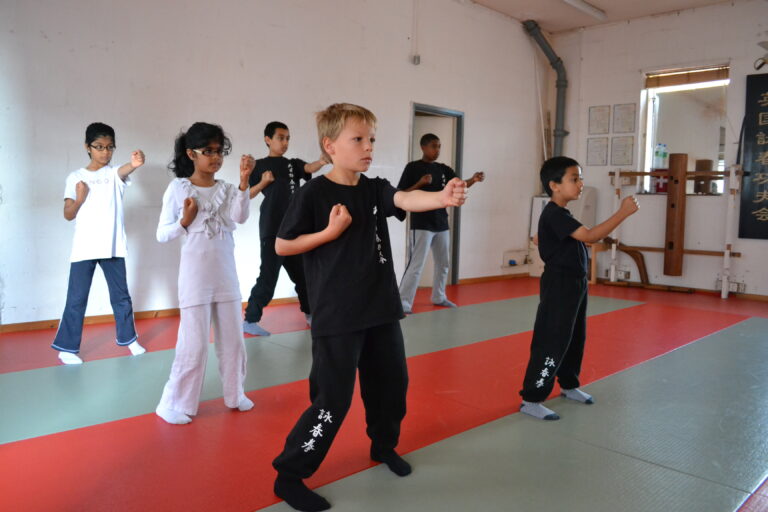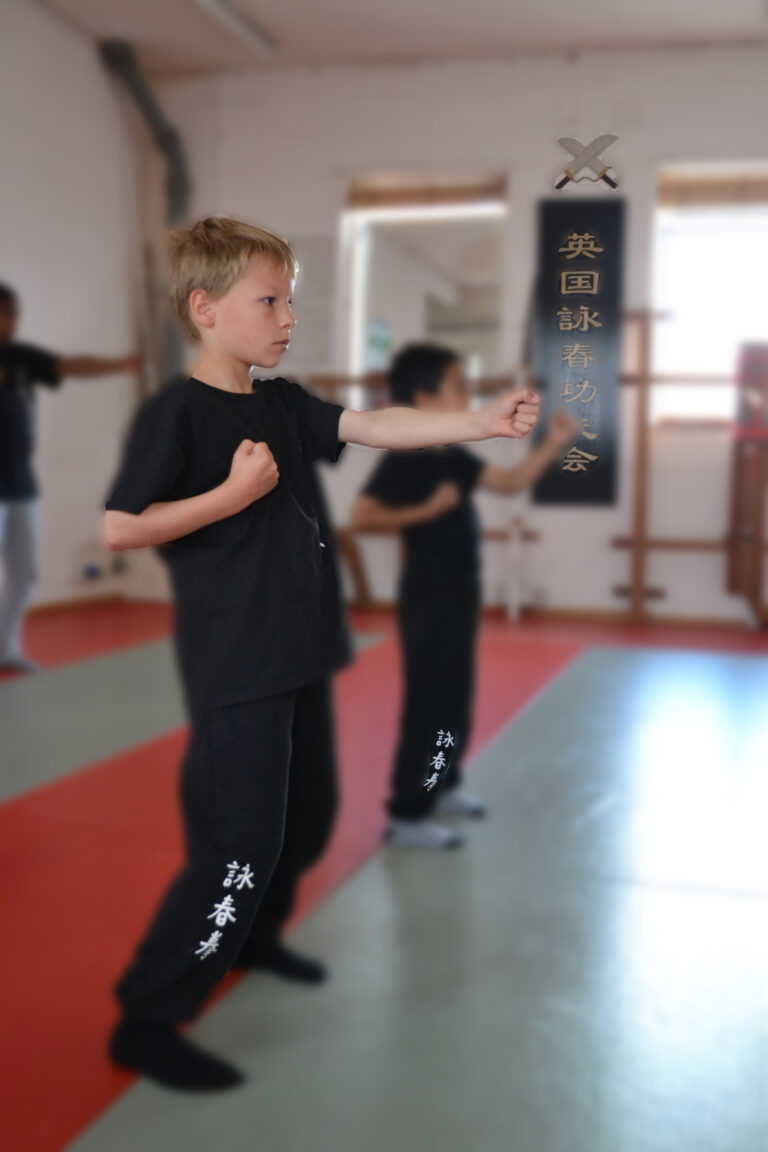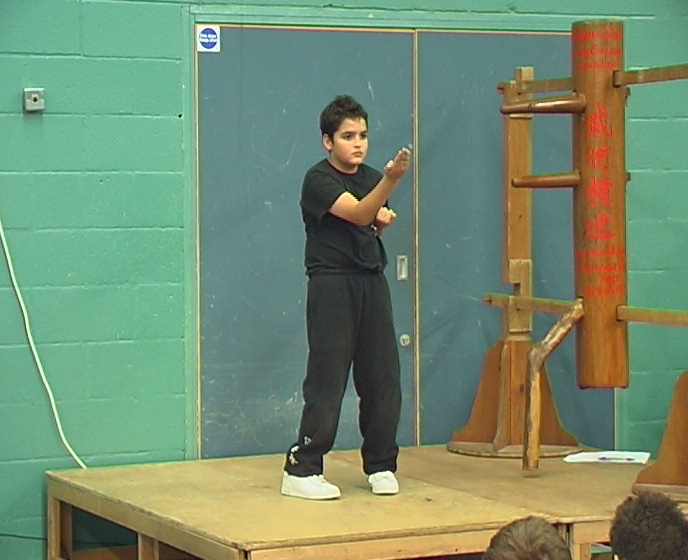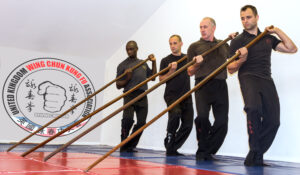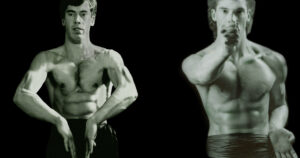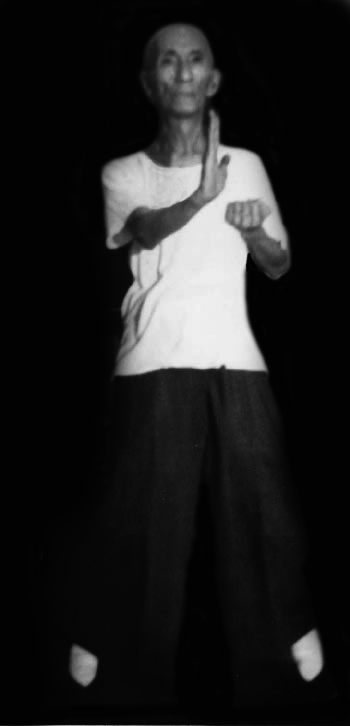
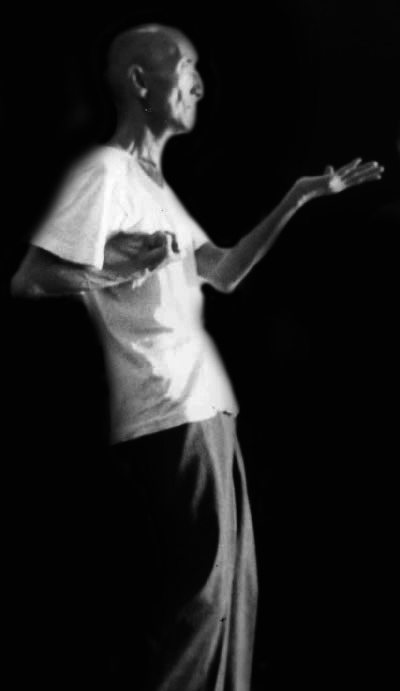
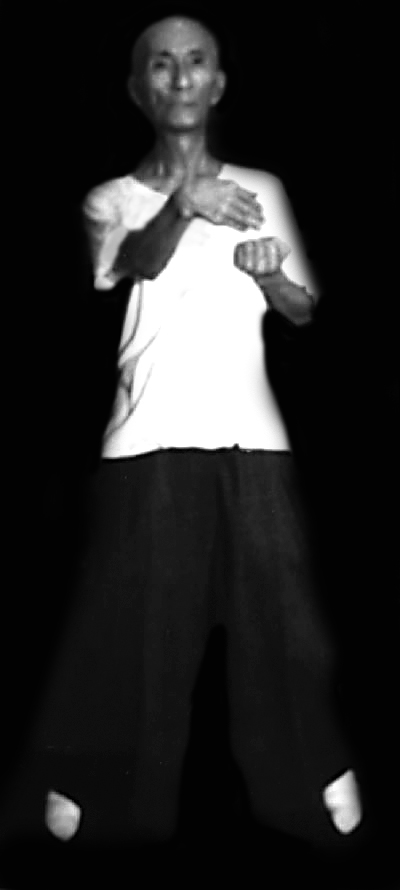
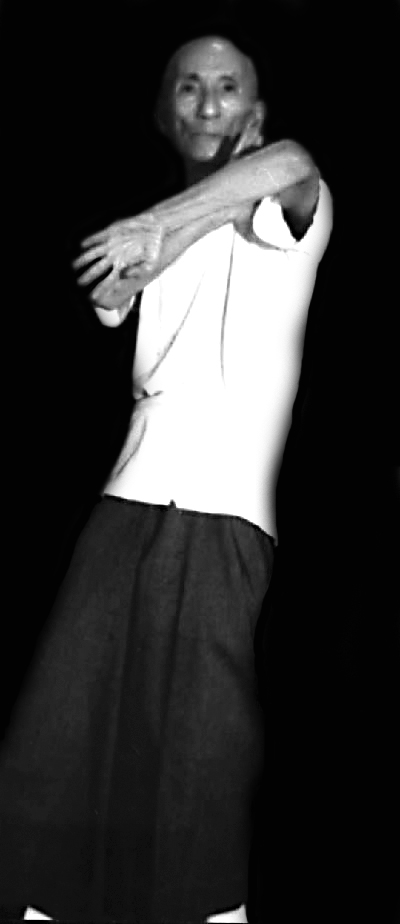
Wing Chun Kuen

Siu Nim Tao
Wing Chun Kung Fu’s First Form
Before we begin our discussion we would like to point out that the Siu Nim Tao and Siu Lim Tao are referring to the same form. The Cantonese speaker does not tend to distinguish a difference between the N and L sound and, therefore, it is common for both pronunciations to be used interchangeably.
Master James Sinclair has over 40 years experience studying, training and teaching the Art. James is familiar with many versions of the Siu Nim Tao and conducts MasterClasses at the UK Wing Chun Kung Fu Assoc. HQ in Rayleigh Essex.
These Wing Chun Seminars are held every mont of various subjects. Once a year James will teach the Siu Nim Tao going into great detail and explaining the Art from many lineages and points of view.
Wing Chun Kung Fu Forms, Art For Arts Sake?
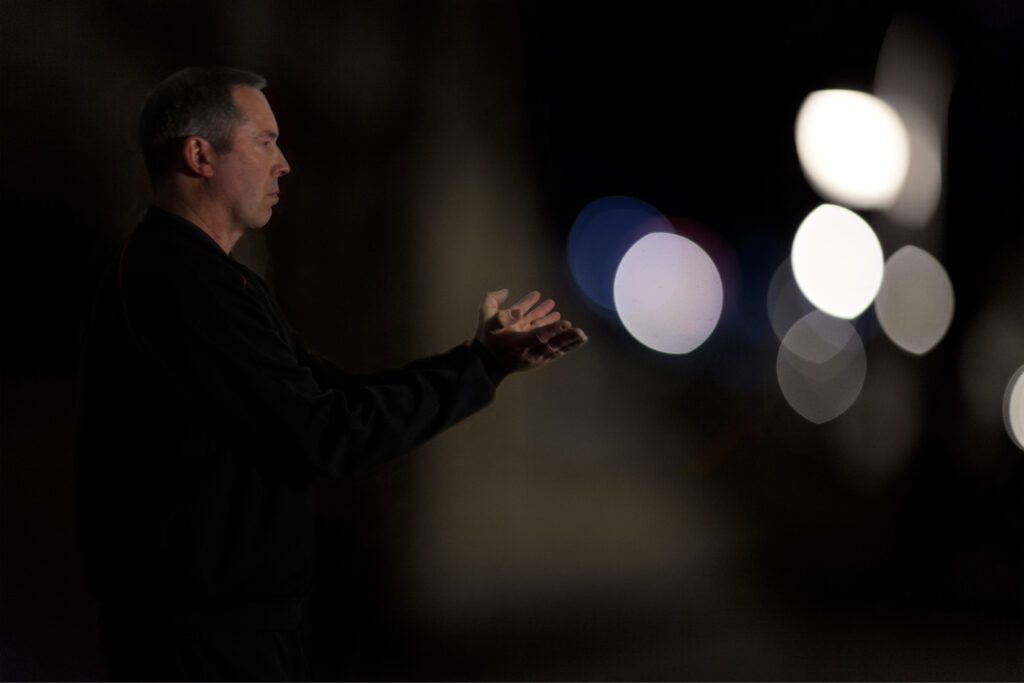
Siu Nim Tao is the descriptive title for Wing Chun’s first form. It translates as ‘Little Idea Way’.
But why do we need forms?
Many fighters dismiss forms as fanciful and of no practical value. They argue that one should not waste time practising techniques to an imaginary opponent when that time could be used with a real live training partner which seems a valid argument, until one realises that a good partner is hard to come by and that Wing Chun is very much a hands on training style.
It would be very difficult for the average student to spend a lot more time training on forms than chi sau for instance.
However, it is easy to knock something like forms or katas if your sole purpose for training is to fight. However, most martial art teachers will tell you that a great many students will never become great fighters, and that many want far more from their chosen martial art.
Simply by observing the Wing Chun Kuen first form one can see it is not designed to be fighting an imaginary opponent. If the practitioner is not using their legs, and using only a single arm techniques for the majority of the application, this is surely obvious.
Many fighters say they have a great understanding and respect for Wing Chun Kung Fu and a particular respect for Bruce Lee. It is a fact that Bruce Lee considered Wing Chun Kung Fu “great little style” and yet people often decry the forms, forms that Bruce Lee himself practiced with great dedication. It is also true that many people within the Art still ‘do not get it’ and struggle to apply the skills in real word scenarios.
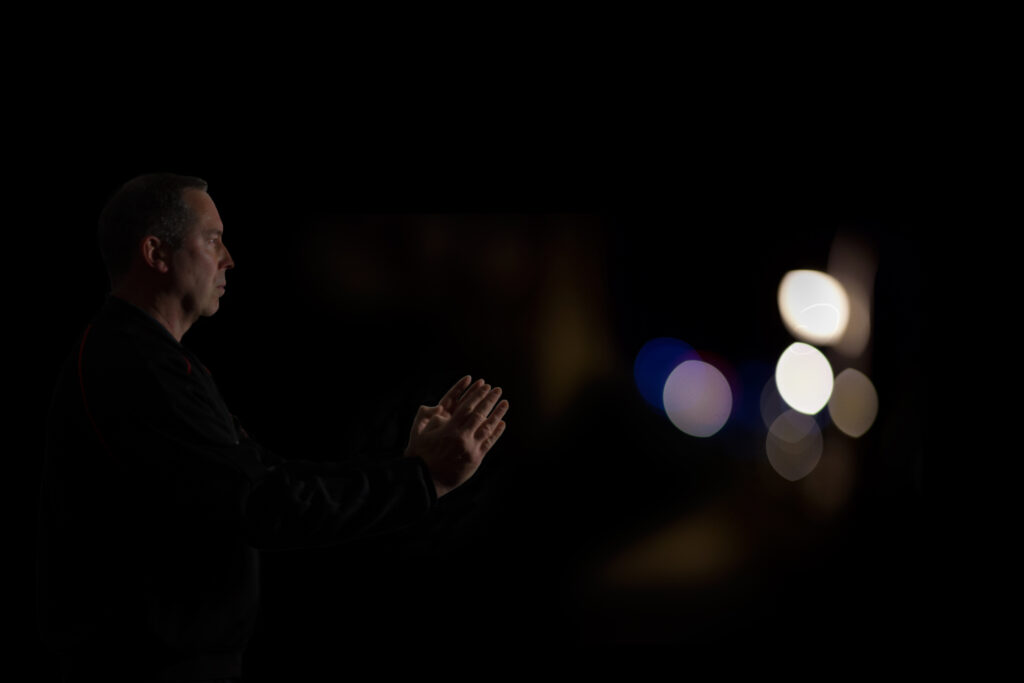
Siu Nim Tao: Imagination or Visualisation
Martial Artists are not just fighters and fighters do not have to have martial art skills. Fighters who dismiss modern theories on sport psychology show a lack of understanding on many levels and may find it difficult to reach their full potential.
It is common for top sportspersons to routinely go through the skills and tactics in their mind. Bobsleigh teams will work together visualising their every movement, the track, and the feeling of success in order to inspire and enable them to believe in themselves, the team will focus on the ‘belief’ that they can succeed. They will visuals it in every detail. It has been demonstrated that a bobsleigh team will visualise with great precision to what they actually achieve on the track.
All fighters know that self belief is an important asset, we usually call it self confidence and often in fighting appears to be arrogance. Boxers shadow spar, it helps balance, concentration and perfection of technique whilst under no physical pressure, and allows the practitioner to see themselves performing the moves they know they will require. This visualisation also allows the brain to make the neural pathway connections necessary to facilitate the execution of a skill when the moment is right.
It is a simple fact that the eyes only relay light, the brain is required to make sense of it. We can all see things in our mind, and it is this clarity of thought that these artistic sequences are aiming to develop. The process helps you to ‘see’ more clearly and react swiftly.
Even if forms were no more than elaborate dances, that does not detract from the skill they require and develop in order to be performed well, and once again not all fighters are great martial artists.
Wing Chun forms are prime examples of building fighting ability through the cultivation of the body and the mind. The stationary stance of Wing Chun’s 1st form offers the opportunity to scrutinise every little detail of the techniques. This alone encourages artistic perfection. This focus on the minutiae of the form, the slowness and ease of criticism possible is the most likely reason that teachers ask this form above all to be demonstrated in form to of them to assess your ability in the Art.
It must be remembered that a Wing Chun practitioner is not defined by his ability to win a fight, to hit a target, to be fast, to fight at close range. These qualities are only a part of Wing Chun as they are many systems. Wing Chun is seen by its frame, the characteristic shapes that one uses. Only when one can apply the shapes and moves from the forms can a person consider themselves a Wing Chun martial artist.
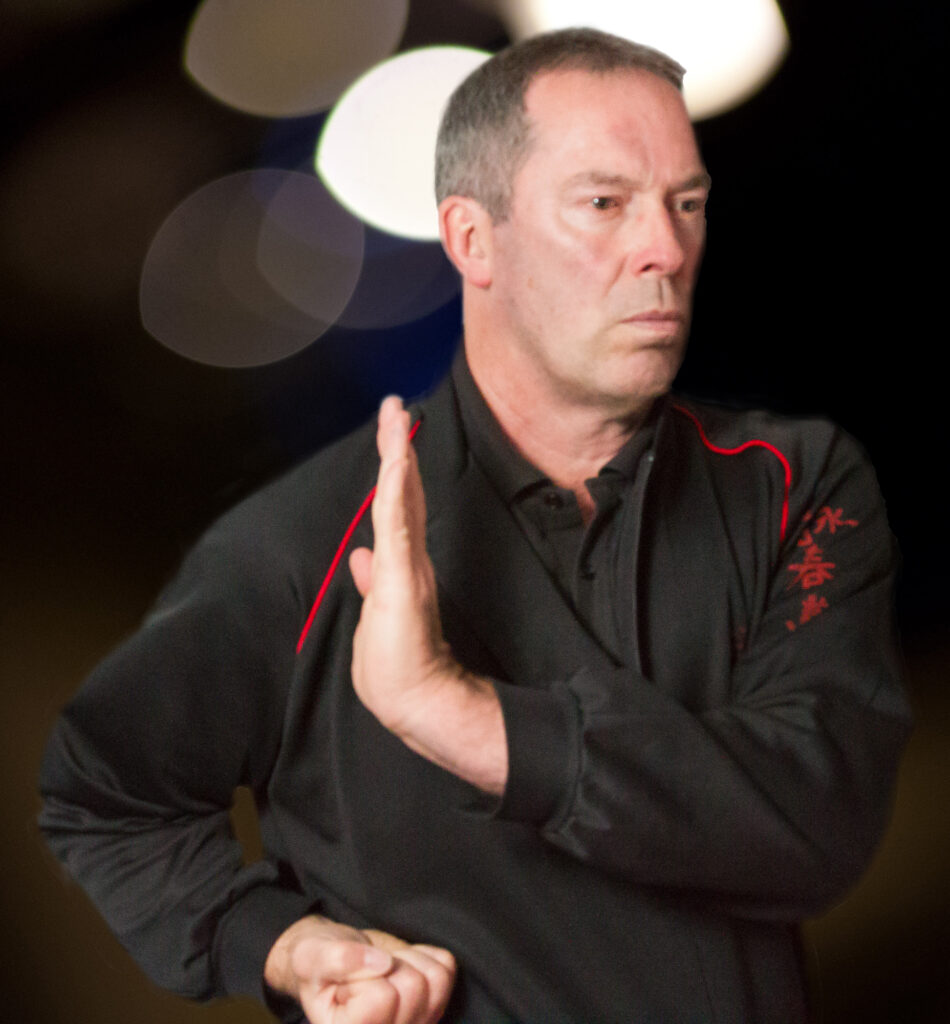
Siu Nim Tao: Reference Book of Wing Chun Kung Fu
The forms act as a kind of reference book allowing the practitioner to backtrack and check positioning, to observe and remind a them of some of the techniques that they may not have been applying, or have been taking for granted.
The forms hold skills and techniques that many generations have worked to develop. These forms represent a synthesis of many minds, and save students many years of there own research by giving a helping hand.
All students eventually finish the ‘traditional’ forms, and a mastery of their techniques will certainly enable them to fight, but then the self discovery of new ideas, moves and philosophies begins. It is hoped we all become wiser and live better lives than our parents. This wish is also true of honourable Wing Chun teachers who aim t improve their students well beyond any ability that they themselves may have achieved.
If your SI-FU truly is your teacher-father then he will wish you to outgrow and achieve more then he ever did. He would retire happy in the knowledge that he did all he could for your growth as a martial artist.
The teacher who will not teach the ‘secrets’ is holding back for fear of you outgrowing him. If you love your children and give all you can for their betterment they will still move on and away with their own lives one day, but they will always have respect for the help you gave. All teachers in any sphere would do well to hold that thought.
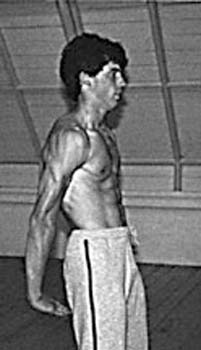
Siu Nim Tao: Discussed
Now let’s move on to discuss the Siu Nim Tao form.
The name reminds students that we start with simple ideas and attempt to master those first, and that we will make better progress if we keep our goals achievable.
Wing Chun students stand in a static stance called Yee Chi Kim Yeung Ma, often referred to as the Goat Gripping Stance. The term goat gripping apparently comes from the way farmers would hold an animals head between the knees to control it during milking, shearing or branding. To facilitate this the stance has the toes turned inwards to allow the knees to be brought closer more easily.
The stance is gently adducted (pulled toward the centre) which consequently brings awareness to the importance of protecting the inside areas (gate/yin) of the body.
The inside area of the legs and arms present a greater danger if struck as this is where the vascular and nervous system are more accessible and, therefore, more vulnerable.
The stance is as wide as the length of your lower leg, a student can measure this by kneeling or may observe that the inside area between the feet is as wide as the shoulders. As most attacks involve swinging, looping movements, Wing Chun practitioners form stances that can withstand this lateral pressure. The do not turn side on.
Once the stance is formed the buttocks are tensed slightly which in turn tilts the hips, flattening the lower back and the legs lightly adducted (brought together) to protect the genitals from a rising kick. The stance also lowers the centre of gravity and brings the student awareness of the earth. The Chinese martial artist say that:
Fist comes from the Heart (Kuen Yau Sum Fut)
Power comes from the Earth (Lik Yau Day Hay)
Having bare feet or wearing flat shoes is preferable when you first start training the Siu Nim Tao form. You will feel the floor and adapt more readily to new footwork. Once the stance is correct the position is held the practitioner moves on to concentrate on the hand and arm techniques.
The opening sequence measures the proportions of the body and helps draw awareness of the upper middle and lower levels and defines the Centre Line.
Siu Nim Tao: The First Section
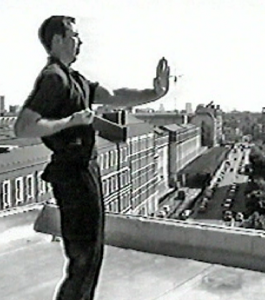
The Siu Nim Tao form is divided into three separate sections each with its own goals. The first section focuses on the development of ‘Lik’ which is basically strength. Wing Chun requires the ability to form strong guards and powerful short punches. This is supported by developing the strength in the shoulder, elbow and wrist in particular. The strength is more sinewy than muscular bulk.
The Wing Chun student needs powerful forearms and wrists to transfer his power and absorb the shock of impact. However, wrist mobility is stressed too with an emphasis on circling to slip an opponents grip and to apply your own grip.
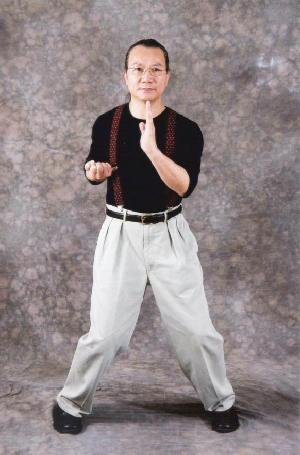
This first section can be performed very slowly and, as such, the student has a chance to concentrate on every detail of his movement. This minute observation to detail encourages artistic appreciation amongst practitioners and begins the journey to martial artist.
The first section also lends itself to the development of breath control and what Chinese Cultural/Philosophical thought would term Chi energy.
Siu Nim Tao: The Second Section

The second section of the form is for developing the correct USE of strength. The use of strength is termed ‘ geng’ or power, and Wing Chun practitioners are
particularly concerned with this aspect of training.
The second section focuses on using power for only a limited period thereby holding fast to the Wing Chun ideal of Economy of Motion. In a fight of 10 minutes a Wing Chun practitioner will use strength for only a minute or so and that strength will be used very specifically.
Conserving energy and correct application of energy are possibly the most important elements to strive for within the Art of Wing Chun Kuen. Often termed Short Distance Power or ‘Chun Ging’ it is referred to time and time again by devotees of Bruce Lee as the dynamic one inch punch. It is in fact all Wing Chun Kuen techniques, from slaps and chops to low kicking and blocking that attempt to use this theory in application.
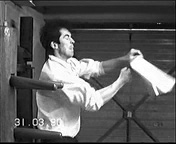
In the second section there are many double handed techniques which is in contrast to the 1st and 3rd sections. This is due to the fact that the techniques used do not get in each other’s way. The emphasis in the practitioners mind should be to accelerate in the last few inches of every technique and use tremendous force in that moment. This intelligent choreography may be down to the fact that the forefathers of Wing Chu Kuen were actors and entertainers in the Chinese Opera.
The well know ‘Short Distance Punch’ is only possible due to the developed ability to rapidly close the fist at tremendous speed.
Siu Nim Tao: The Third Section
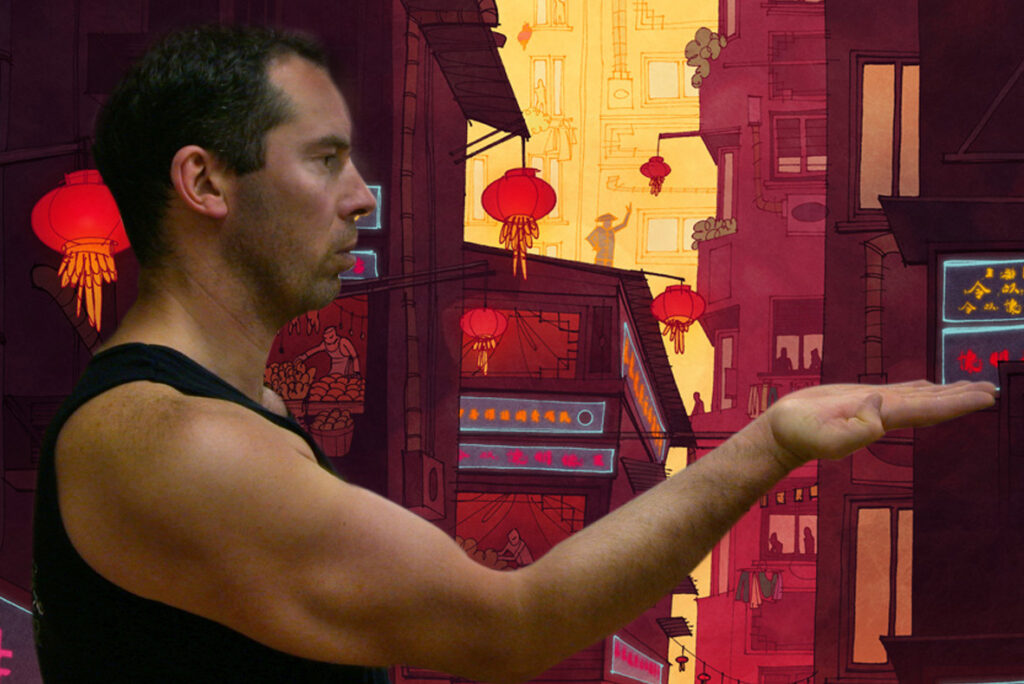
The third section of the Siu Nim Tao uses the skills acquired in sections 1 & 2 with a variety of different strikes and blocks.
The application in the form does not have to correspond exactly to that which you would apply in a fight. For instance the first movements of the 3rd section focus’s on a Paak Sau (slap block) which can be interpreted as an inside gate movement then counter with Chang Sau (spade hand).
The normal strike following an inside Paak Sau is to deliver a Shat Geng Sau (throat cutting hand) as this offers better protection as the elbow is higher and bridges more safely. However, the throat cutting movement has already been performed clearly in the 2nd section. Therefore, the Chang Sau is another form of hand strike contained within the system.
Clearly the Wing Chun forms as a whole are NOT aimed at combating with an imaginary opponent.
The guiding principle of the Siu Nim Tao and other Forms throughout the system is so t achieve perfect frame, economical use and power and create a mindset that is conducive to absorbing the material, and making the knowledge contained therein, your own.
Try performing the Siu Nim Tao before every training session in order to switch your mind on to the fact that you are about to study martial arts. Also try always to end a session with the Siu Nim Tao as it will calm your mind and help absorb the lessons of the day. Taking a little time out to immerse yourself in quiet concentration will reduce stress caused by other areas of life.
From all at the UKWCKFA, enjoy your journey.
James Sinclair
